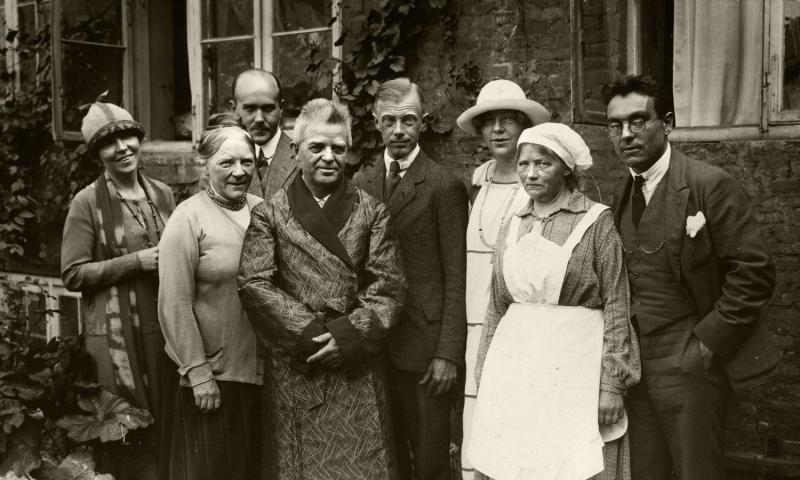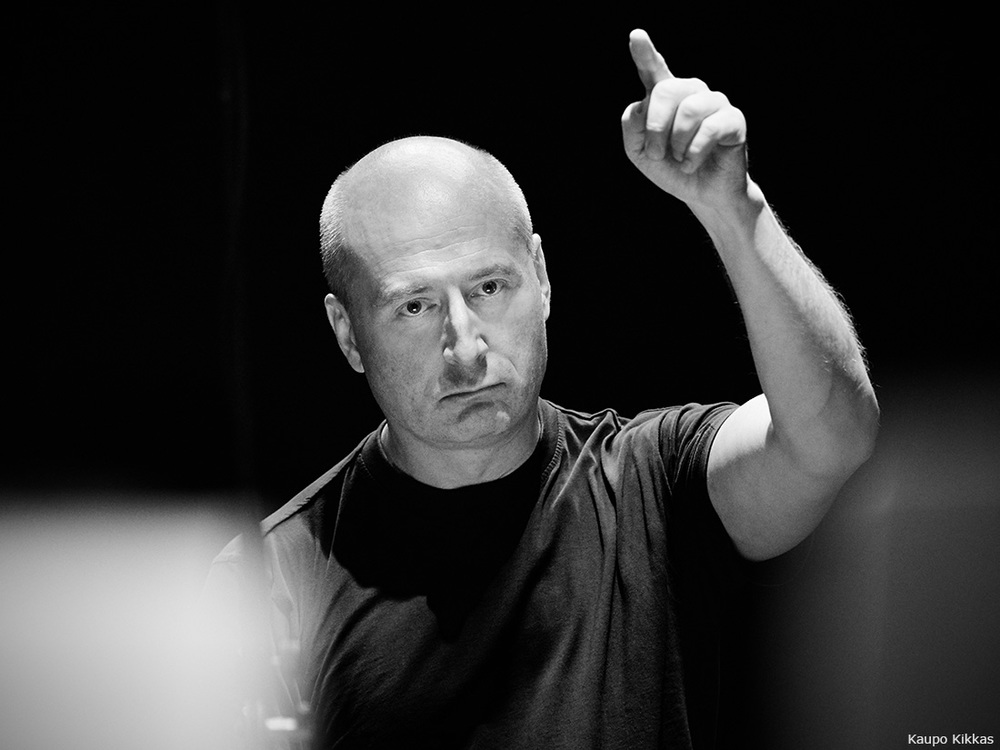Coles, Philharmonia, Järvi, RFH
The art desk
David Nice
20.11.2015

Nielsen sporting his 60th birthday dressing gown, surrounded by family and maid, in 1925
Great Estonian Neeme Järvi’s two conducting sons have had varying success in London this week. Kristjan did what he could with a dog’s dinner of a Britten Sinfonia programme on Wednesday night, while older brother Paavo presumably chose the three surefire masterpieces in his Philharmonia concert yesterday evening. The climax was Nielsen’s Fifth Symphony, one of the greatest of the 20th century; certainly there’s none to cap its sheer physicality. But the same tension and uncertainties had a different kind of impact in the Flute Concerto, one of Nielsen’s later enigmas, and while Haydn’s “Military” Symphony was there for percussive parallels with the Fifth, it had sufficient delights and surprises in all four movements to stand by its sprightly self.
Warmth suffused the Philharmonia string playing in Haydn’s slow introduction; his first-movement themes were unfurled with nuanced fluency, only for the two bars’ silence and the change of key in the development to catch us unawares. “Military” is an odd nickname for this great 100th Symphony: where you’d expect the Turkish janissary-band triangle, cymbals and switch-stroked bass drum to appear in the opening Allegro, they bide their time to adorn and threaten what starts out as the simplest of second-movement melodies.
A lone trumpet fanfare makes a belated appearance in the Allegretto; Mahler certainly knew it when he wrote the opening of his Fifth Symphony, a possible concert companion. Järvi’s link was the disruptive percussion which Nielsen takes to shattering heights. But there’s also Haydn’s spotlight on exquisite, intimate flutes; Katherine Bryan, the young guest principal, had better be snapped up by some other orchestra right now.
The usual incumbent, the Phlharmonia’s Samuel Coles (pictured right), was there in Nielsen’s Flute Concerto to confound and oppose his fellow players. Which is the more baffled, the soloist or the orchestra, in this protean work would be hard to say; but one could only marvel afresh at how Nielsen shuns the bucolic and lets the usually frail flute stand proud and clear in the spaces between orchestra outbursts.
The listener has to work hard to follow the trail, but is rewarded by a looking-glass logic and a few minutes of hard-won repose; the one at the end of the first movement, with strings wraith-like above the soloist, was very moving indeed. And Coles’s fellow principals dialogued with him exquisitely – or rudely, as in the case of bass trombonist David Stewart, whose sullen Fury is deflated at the end of this astounding work. Coles’s sound, both full and sensitive, rarely found itself swamped by the orchestra; but then Nielsen makes sure that only happens once, and for dramatic effect.
A conscious grandeur of scale informed Järvi’s interpretation of the Fifth Symphony, first performed in 1922, four years before the concerto (the conductor pictured below by Kaupo Kikkas). This was a heavier, more deliberate performance than Sakari Oramo's whiplash approach with the BBC Symphony Orchestra earlier this year, though mostly valid on its own terms.
Those nuanced phrases building around the in-the-beginning thirds at the start all rose and fell like wave motions at different speeds. The magnificent but still beset hymn which emerges half way through the movement was authoritatively built, leading my artist companion to remark afterwards that such a body of sound took on a physical shape, though the side-drum which goes crazy in the face of its opposition might have been more overwhelming.
In what has to be the greatest of all ultimately optimistic finales – yes, Beethoven Nine included – Järvi’s intervention in the phrasing could sometimes be a slight problem; moments like the second, ethereal fugal floating just need to happen, or at least seem to happen (Nielsen’s marking is semplice, “simple”).
For the dancing energy around it, the Philharmonia strings wouldn’t burn for Järvi in the way that those of his super-orchestra at Estonia’s Pärnu Music Festivalpalpably do. Even so, I’d challenge anyone in the audience not to have got goosebumps and shivers from Nielsen’s never over-rhetorical but always insistently in-your-face dynamism. So why was the hall half empty and so representative for the most part only of the older age group; why had tickets not been shelled out to students and potential Philharmonia enthusiasts? For if anything is going to turn young people on to the shocks and buffets of the symphony at its most adrenalin-charged, Nielsen’s Fifth is that work. Let's hope the impact continues well past the composer's 150th birthday year, which has seen him absolutely equal to fellow anniversarian Sibelius.

http://www.theartsdesk.com/classical-music/coles-philharmonia-jarvi-rfh
Comments